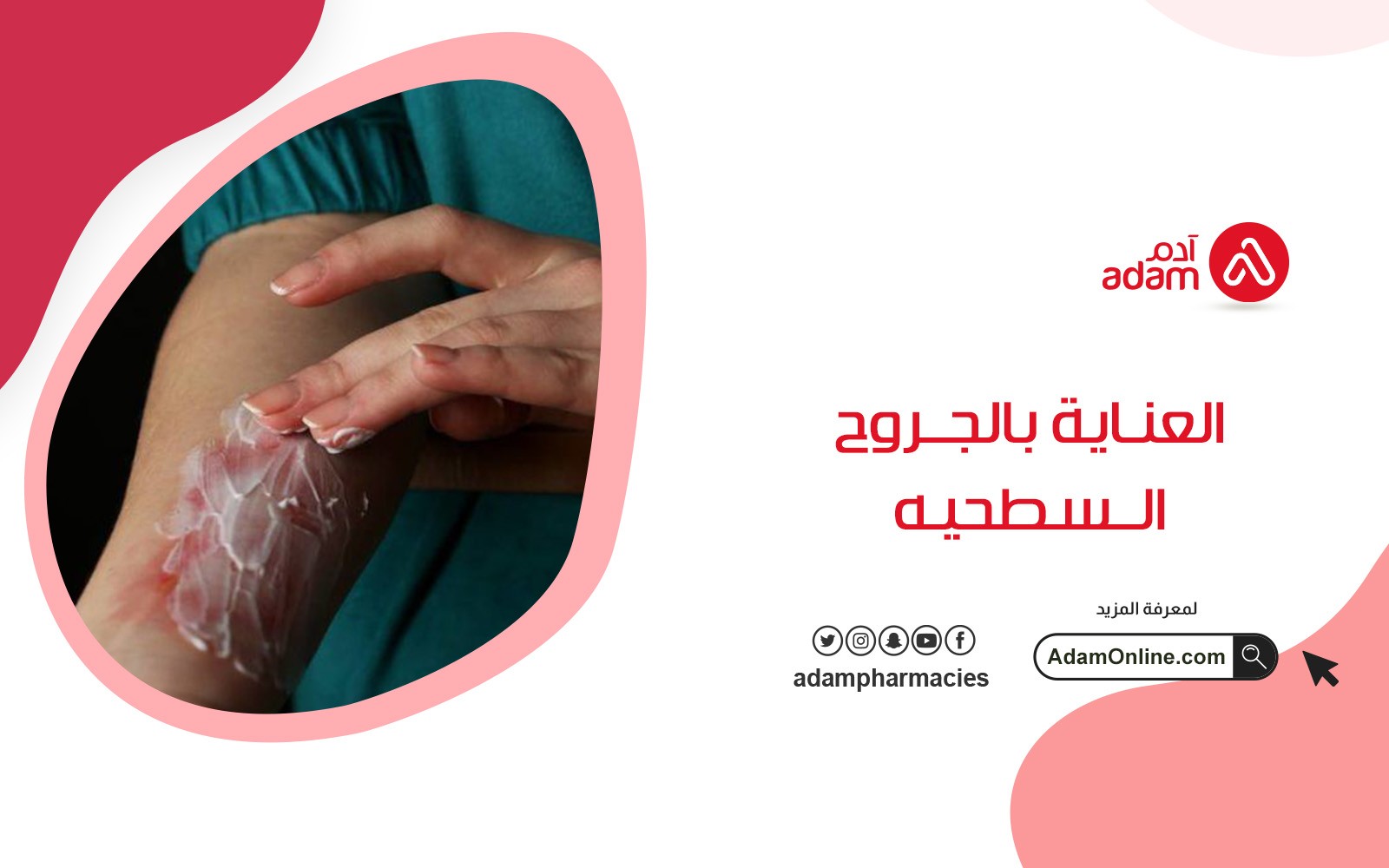Superficial wound care

Common injuries include minor scrapes, burns and abrasions, but what is the most effective home treatment for such wounds and what are the best ways to care for superficial wounds. This is what we will learn with you through our article.
Superficial Wound Care
The best wound care techniques at home are described along with when you should seek medical attention A wound is related to the skin Cuts and scrapes include abrasions when you are cooking, cleaning or gardening you may hurt yourself and a bad fall may result in the home or during Playing can injure your child. A wound can occur at any time of the day or night so it is important to know how to care for superficial wounds to avoid infection and other consequences and it is essential to take care of wounds properly. So let's discuss the seven steps of wound healing.
Step 1: Clean your hands
Make sure that anyone administering wound care washes their hands because prevention of infection is critical in wound care and it is sufficient to wash hands with soap and water and then sanitize them.
Step 2. Stop the bleeding
- Use pressure on the wound to stop the bleeding.
- Use a clean bandage or towel to accomplish this.
- Elevate the incision above the level of the heart, if possible.
- This can help you use gravity to reduce blood flow to the wound site.
Step 3: Treat the injury
- When cleaning the wound, use running water.
- Spend at least five minutes doing this.
- Soap can be used externally, but not internally.
- If the wound was caused by a fall outside, there may be foreign bodies that could infect the wound.
- It is necessary to seek medical attention to treat the wound if significant debris has embedded in the wound.
- Treat the wound very gently to avoid aggravating the wound. The goal of this step is to determine the best possible conditions for healing.
- Alternatively, you can clean the wound with a saline solution.
- Use gauze dipped in saline to clean the wound.
- Saline, unlike disinfectants, will not cause further damage to tissues.
- As a last cleaning step, wipe the area dry with a fresh towel or piece of tissue.
Step 4: Apply antibiotic cream
Apply antibacterial cream to a small wound to avoid infection Woundy Free Cream's all-natural formula is effective in healing a wide range of skin cuts and irritations, from minor cuts and scrapes to psoriasis and laser-related dermatitis. It's also found in wounds that take a long time to heal, such as bed sores.
Step 5: Covering the injury
The next step is to cover the wound with a sterile bandage with a bandage, preferably a non-adhesive bandage, to prevent it from spreading. This applies pressure to the area to promote healing while protecting the skin around the wound from damage and preventing it from multiplying.
Step 7: Change the bandage The bandage
should be changed at least once every day. When changing the dressing, make sure to clean the wound well and apply a sterile dressing and wash your hands before you begin. If the wound bleeds to touch, emits a yellowish discharge, or appears dark red, consider seeing a doctor while changing the dressing and observing this healing process. to unusual wound healing.
Step 7: Track the symptoms
Watch for signs of infection See your doctor as soon as possible if you have any of the following symptoms of irregular wound healing: severe pain, foul odor, thick and yellow discharge, or discoloration of the skin around the wound.
When to go to the hospital or doctor for wound care
Most wounds can be treated at home without medical help. Although not always.
- You should go to the emergency department if the incision is too deep or exposed bones, organs or blood vessels, or if it is still bleeding profusely even after compression. You may need stitches if the wound is longer than half an inch.
- If the wound was caused by something dirty, rust, an animal or human bite, or both, you should go to an urgent care center or emergency room.
- If symptoms also get worse, contact your doctor as soon as possible and this may include fever, redness, new or worsening discharge, or severe pain.
- And if the wound hasn't healed after more than 30 days, it's time to see your doctor.





























